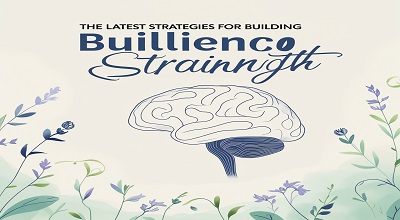Emotional Resilience Training
Emotional Resilience Training: Emotional resilience is the ability to adapt to stress, adversity, and life challenges while maintaining mental well-being. The Emotional resilience training equips individuals with tools to bounce back from setbacks, manage emotions effectively, and thrive in difficult situations.
In recent years, emotional resilience has gained significant attention in psychology, education, and corporate training. With rising stress levels globally, learning resilience skills is no longer optional—it’s essential for personal and professional success.
This blog explores the latest trends, scientific insights, and practical techniques in emotional resilience training.
Why Emotional Resilience Matters in Today’s World?
Modern life is filled with stressors—work pressure, financial instability, social media influence, and global crises. Without resilience, individuals may experience burnout, anxiety, and depression.
Key Benefits of Emotional Resilience:
- Reduces stress and anxiety
- Improves decision-making under pressure
- Enhances relationships and social connections
- Boosts productivity and performance
- Promotes long-term mental health
Organizations, schools, and individuals are increasingly investing in resilience training to foster well-being and adaptability.
The Science Behind Emotional Resilience
Research in neuroscience and psychology reveals that resilience is not an innate trait but a skill that can be developed.
Key Findings:
- Neuroplasticity: The brain can rewire itself through practice.
- Hormonal Balance: Techniques like deep breathing regulate cortisol (stress hormone).
- Positive Psychology: Optimism and gratitude strengthen resilience.
Studies show that structured training programs significantly improve emotional regulation and coping mechanisms.
Latest Techniques in Emotional Resilience Training
a. Acceptance and Commitment Therapy (ACT)
ACT teaches individuals to accept difficult emotions while committing to value-driven actions.
b. Emotional Agility Training
Developed by Susan David, this method emphasises the constructive management of emotions.
c. Biofeedback and Wearable Tech
Devices like heart rate monitors help individuals track stress responses in real time.
d. Digital Resilience Apps
Apps like Headspace and Calm offer guided resilience exercises.
Mindfulness and Emotional Resilience
Mindfulness meditation enhances self-awareness and reduces reactivity to stress.
Practices to Try:
- Body scan meditation
- Breath awareness exercises
- Mindful journaling
Studies confirm that mindfulness increases gray matter in brain regions linked to emotional control.
Cognitive Behavioral Techniques for Resilience
Cognitive Behavioral Therapy (CBT) helps reframe negative thought patterns.
Resilience-Building CBT Strategies:
- Identifying cognitive distortions
- Challenging catastrophic thinking
- Developing problem-solving skills
Building Resilience Through Physical Health
Physical well-being directly impacts emotional resilience.
Key Strategies:
- Regular exercise (releases endorphins)
- Balanced nutrition (supports brain function)
- Adequate sleep (enhances emotional regulation)
Social Support and Emotional Resilience
Strong relationships act as a buffer against stress.
Ways to Strengthen Social Resilience:
- Seeking mentorship
- Joining support groups
- Practicing active listening
Emotional Resilience in the Workplace
Companies now prioritize resilience training to reduce burnout and improve productivity.
Corporate Resilience Programs Include:
- Stress management workshops
- Leadership resilience coaching
- Flexible work policies
Teaching Emotional Resilience to Children and Students
Schools integrate resilience training through:
- Social-emotional learning (SEL) programs
- Mindfulness in classrooms
- Growth mindset education
Measuring and Tracking Emotional Resilience
Tools like the Connor-Davidson Resilience Scale (CD-RISC) assess resilience levels.
Common Myths About Emotional Resilience
❌ Myth: Resilient people never feel stress.
✅ Fact: They manage stress effectively.
❌ Myth: Resilience is a fixed trait.
✅ Fact: It can be developed with practice.
FAQs on Emotional Resilience Training
Q: How long does it take to build emotional resilience?
A: It varies, but consistent practice over weeks or months yields results.
Q: Can resilience training help with anxiety?
A: Yes, techniques like CBT and mindfulness reduce anxiety symptoms.
Conclusion: The Future of Emotional Resilience Training
As mental health awareness grows, resilience training will become a standard in education, workplaces, and personal development. By adopting the latest techniques, individuals can thrive in an unpredictable world.
More Here: Arabs Hackers
